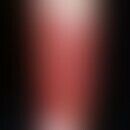DefinitionThis section has been translated automatically.
The UNC13D gene (UNC13D stands for: Unc-13 Homolog D) is a protein-coding gene located on chromosome 17q25.3.
General informationThis section has been translated automatically.
The encoded protein belongs to the UNC13 family and has a similar domain structure to other family members. However, the molecule lacks an N-terminal phorbol ester-binding C1 domain, which is present in other Munc13 proteins. The encoded protein plays a role in the exocytosis of cytotoxic granules in lymphocytes.
It is required for granule maturation as well as for granule docking and priming at the immunological synapse.
The UNC13D protein regulates the assembly of recycling and late endosomal structures, leading to the formation of an endosomal exocytic compartment that fuses with perforin-containing granules at the immunological synapse and licenses them for exocytosis.
It regulates Ca(2+)-dependent secretory lysosome exocytosis in mast cells.
ClinicThis section has been translated automatically.
Mutations in this gene are associated with familial hemophagocytic lymphohistiocytosis type 3, a genetically heterogeneous, rare autosomal recessive immunodeficiency disorder. Related signaling pathways include the innate immune system and deregulation of Rab and Rab effector genes in bladder cancer. An important paralog of this gene is BAIAP3.
LiteratureThis section has been translated automatically.
- Canna SW et al (2020) Pediatric hemophagocytic lymphohistiocytosis. Blood 135:1332-1343.
- Yoon HS et al (2010) UNC13D is the predominant causative gene with recurrent splicing mutations in Korean patients with familial hemophagocytic lymphohistiocytosis. Haematologica 95:622-626.



